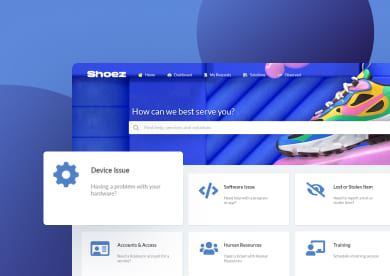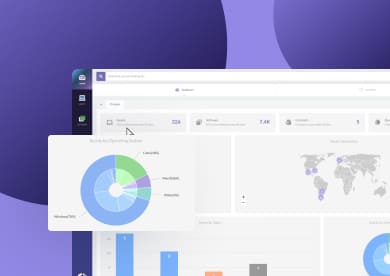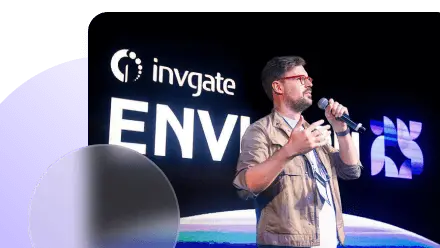Making the move to a new ITSM platform can feel like a big undertaking. A clear plan helps break the work into manageable pieces and keeps teams on track.
Instead of jumping straight to product comparisons, it helps to step back and look at the bigger picture: what does your organization actually need from a modern ITSM platform, and what will it take to get there?
Below, you’ll find guidance on when to consider migration, what benefits to expect, and a detailed plan covering each key phase.
When to conduct an ITSM migration
Migrating makes sense when your current system slows down operations, limits automation, or forces manual workarounds. Common signs include:
-
A steep learning curve for new agents and requesters.
-
Inability to connect with critical enterprise tools.
-
Rising support and maintenance expenses.
-
Bottlenecks in repetitive tasks that manual processes can’t handle.
-
Rigid workflows that require coding or custom development for simple changes.
Start by collecting feedback from frontline agents, incident managers, and end users. If you hear recurring complaints about slow ticket response, manual workarounds, or missing integrations, you have clear indicators. Combine their input with metrics such as average resolution times and system downtime incidents, and you'll have a data-driven case.
Next, compare those findings against your strategic goals for service delivery and growth. Confirm that the existing system can scale and adapt if your roadmap includes expanding into new service areas, automating repeatable tasks, or centralizing support functions. When continuous patching and custom coding become the norm, rather than occasional exceptions, the hidden costs of running an outdated platform start to outweigh the effort required to migrate. At that point, you have a solid rationale for moving forward with a structured migration plan.
With clear drivers and benefits in mind, you’re ready to map out the steps ahead.
ITSM migration checklist
Download this checklist to plan your ITSM migration in phases, select the right platform, and guide your new implementation and training without guesswork.
ITSM migration plan
Shifting platforms affects people, data, processes, and technology. A phased approach lowers risk and gives teams time to adapt. The following seven steps include tips, sample deliverables, and questions to answer at each stage.
Step one: assess the issues with the current system
To move forward with the process, you first need to determine your starting point — meaning, the shortcomings of the current system, delays in operations, manual procedures, and automation blockers.
Collecting feedback and complaints from stakeholders is key at this stage, along with ITSM platform metrics — all this data helps justify the direction of the change.
- Document your current ITSM processes (ticket flow, approvals, categories).
- Identify manual steps.
- Gather recurring user complaints.
- Map out current integrations and their purpose (e.g., monitoring tools, HRIS, asset inventory).
- Assess the maturity of your procedures (ad hoc, repeatable, optimized).
It’s also a good idea to run a benchmark between current capabilities and the outcomes you want to achieve.
Finally, clearly define the main drivers behind the migration — whether it’s performance improvement, increased flexibility, or cost reduction.
Step two: Define what the new platform must support
The first step is translating your problems and goals into functional requirements.
Start by outlining which processes must be supported from day one — for example, Incident Management, Service Request, Change Management, or Asset tracking. Then, think about other elements:
-
Does the tool need to support IT and non-IT teams?
-
Will you need integration with tools like Active Directory, email systems, HR software, or monitoring platforms?
-
Who will manage the tool — technical admins, or business users?
Also, don’t forget internal flexibility. Can your team adjust workflows and configure forms without outside help? What parts of your current setup are non-negotiable?
By the end of this phase, you should have a clear idea of what you need the platform to do — not just the features it must include, but how it fits into the broader environment.
Step three: Choosing the right ITSM platform
Now that your internal needs are clear, you can start comparing tools. Beyond core features, you should look at how the tool fits your broader ecosystem.
Evaluation criteria to consider:
- Integration options with existing systems.
- Automation capabilities and workflow flexibility.
- Scalability and licensing models.
- Vendor support quality and release frequency.
A simple demo or feature list won’t be enough — you need to know how the tool will behave in real use.
Ask vendors:
- Can we see how this tool handles a typical service request from intake to resolution?
- How are customizations made? Is it all through settings, or will we need code?
- What’s your support model post-implementation?
You should also check the actual time and effort involved in deploying the tool. A “3-week deployment” may only include infrastructure setup — not process configuration, integrations, or training.
At this stage, it's also recommended to use a formal Request for Proposal (RFP) process. This helps vendors respond to your documented requirements in a structured way, making it easier to compare platforms side by side.
Many organizations also choose to involve key stakeholders in this stage, such as HR or Facilities, if they plan to expand Service Management beyond IT.
Step four: Planning a phased migration
Avoid the temptation to move everything at once. A phased approach gives your team the space to test and adjust as you go.
Start by identifying which services or teams to include in your first phase. This could be based on the volume of tickets, the team's willingness to test new systems, or the processes' simplicity.
Include in your migration plan:
- Clear phases (e.g., pilot → expansion → full rollout).
- Milestones and deadlines for each stage.
- Risk management strategies and fallback options.
- Assigned owners for each step and workstream.
The more detailed your timeline and dependencies, the smoother the execution will be.
Step five: Implement and test in the new environment
Once your environment is ready, begin moving over key elements.
This typically includes:
- Cleaning and mapping legacy data.
- Rebuilding workflows and automation logic.
- Reconnecting integrations and testing functionality.
- Validating that SLAs, priorities, and reports are behaving as expected.
You’ll want to test:
- A few common service request scenarios end-to-end.
- A sample of historical ticket data migrated into the new system.
- Agent and manager dashboards with live metrics.
Gather input from power users during this stage. The more feedback you collect early, the fewer issues you’ll face after go-live.
Step six: Train, go live, and stabilize
Training isn’t a checkbox. It’s what makes or breaks adoption.
Segment your training by role:
- Agents need time in the system to understand how to triage, escalate, and resolve tickets.
- Managers need to know how to read dashboards and adjust assignments.
- Requesters need a simple guide to submitting and tracking tickets.
Create quick-reference materials and point users to them in internal channels. Then:
- Freeze legacy system access at a defined date.
- Perform the final data migration.
- Monitor performance and ticket flow daily.
Post-launch, collect feedback frequently during the first weeks. Track any issues, and roll out fixes quickly. The goal is stability, not perfection — and giving your team time to adapt.
ITSM migration success story
To illustrate what an ITSM migration can look like in practice, let’s walk through the experience of Peoples Bank, who moved from a legacy setup to InvGate Service Management. Their case highlights several common challenges — and how to address them when choosing and implementing a new solution.
When Peoples Bank decided to move away from its legacy ITSM tool, it wasn’t just about new features. The existing system had become fragmented, inconsistent across teams, and difficult to update. HR and payroll departments didn’t trust it with sensitive data, and reporting was too limited to support operational decisions. There was no clear path forward without a change.
“We needed something multiple departments could use. Our goal was a single place to go for support, with clear permissions and reliable reporting.”
Megan Engels
ITSM Manager, Peoples Bank
Determined to find a better fit, the IT team conducted more than 20 vendor demos. Their selection process focused not only on feature sets, but on how well the vendor supported their evaluation. In the end, InvGate stood out as the most viable choice — not because of price alone, but because of how the solution aligned with their operational model and service goals.
“Do your due diligence. You need to figure out what you need to be successful. Find a partner that will work with you beyond the sale.”
After implementation, the results were visible across the organization. Legacy inboxes were replaced by a unified service portal, and portal adoption increased from 20% to 95% within six months. Teams that had relied on gut instinct for support decisions began using data and dashboards to manage their work more effectively.
“We’re one full support department now — across groups and teams, it’s one place to go for help. And from an end user perspective, that’s just better.”
The ability to manage permissions by department, collaborate across teams, and adapt configurations without heavy dependencies made a measurable difference. For Peoples Bank, the ITSM migration redefined how service delivery worked across their organization.















